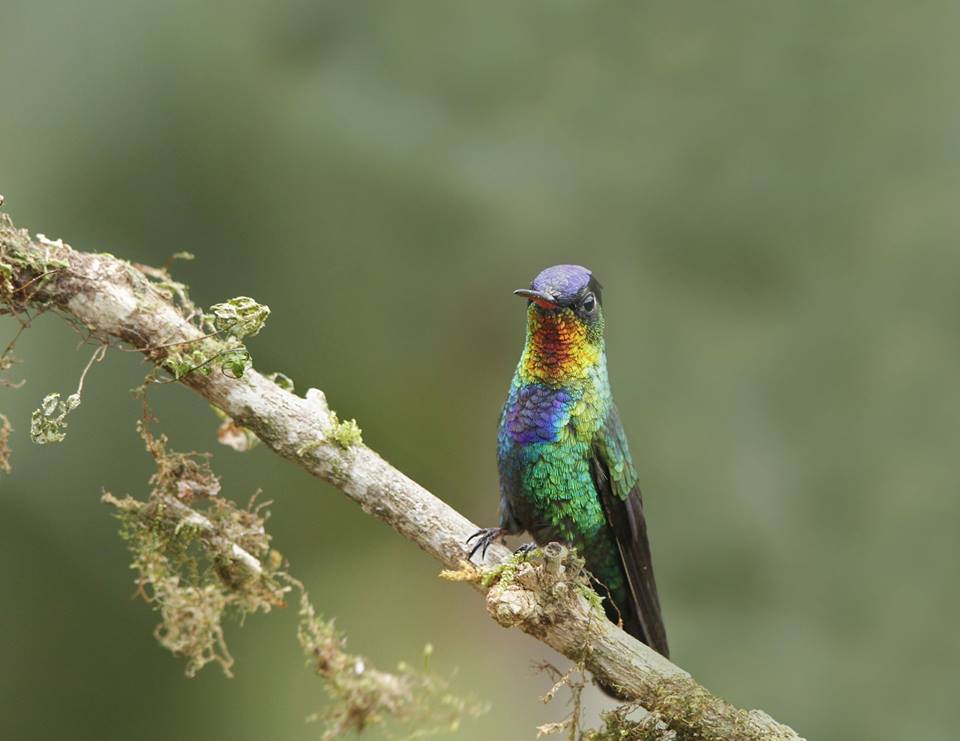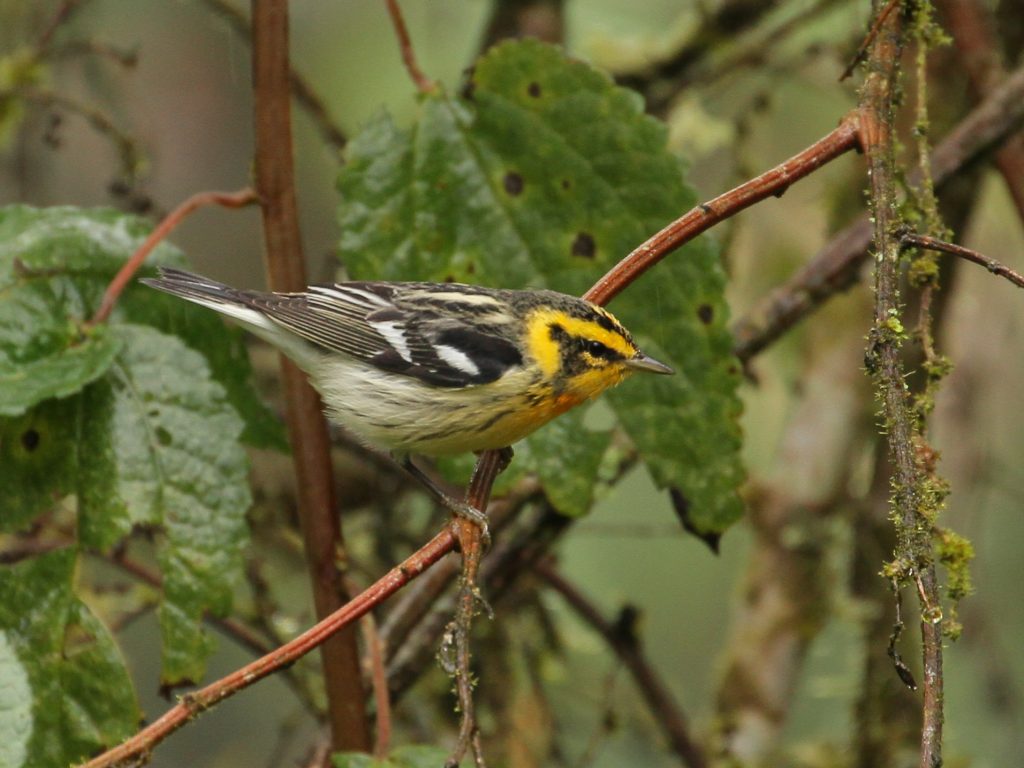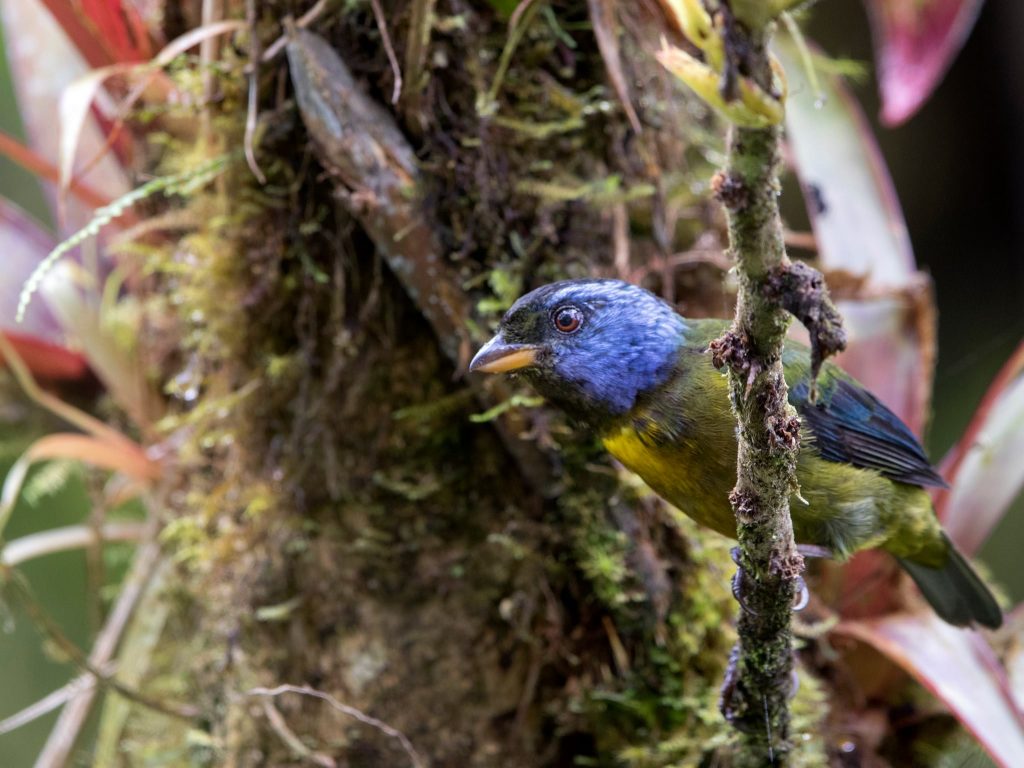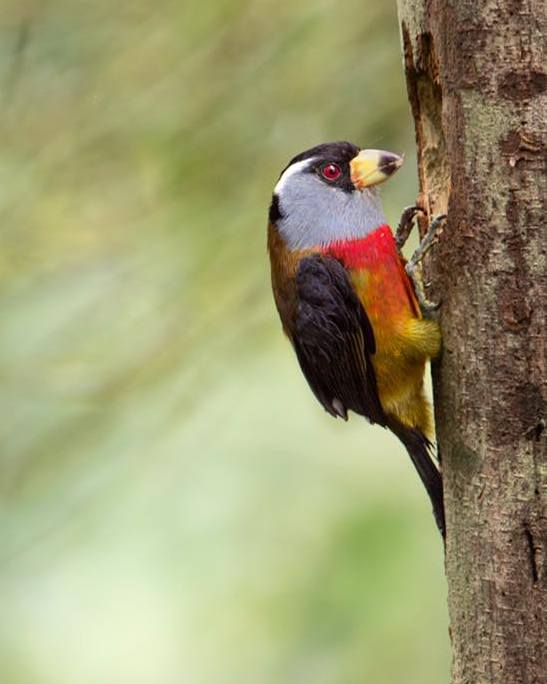
A Fiery-throated Hummingbird in central Costa Rica’s Talamanca Highlands. Photo by Will Freedberg.
This March, our Director of Conservation Science, Jeff Collins, is leading a group trip to Costa Rica. In addition to supporting Costa Rican ecotourism ventures, proceeds from the trip will go towards bird conservation projects at Mass Audubon.
Bird diversity in Costa Rica is higher than anywhere north of the Andes, but that’s not the country’s only draw. Read on for details on what makes Costa Rica such a unique destination for birders.
Costa Rica’s Conservation Legacy
Costa Rica’s commitment to conservation is one of the strongest of any country in the Americas, rivaling (and in many ways outdoing) that of the US and Canada.
In the 1980s, the government decided to bet on making conservation at least as much a priority as agriculture, extraction and development. The country invested in protected areas, sustainable livelihoods for rural communities, and reforestation programs that increased forest cover from 21% to 50% in a few decades.
Ecotourism is certainly the most-often cited economic benefit to come from these decisions, and indeed nearly 15% of the country’s GDP comes from tourism (and about half of that from ecotourism). But another major boon was the emergence of Costa Rica as a hub for tropical biology studies. The country’s high index of human development paired with its intact ecosystems have both attracted researchers and engaged the international community as well as developed Costa Rica’s now-booming national academe.
It’s no surprise, therefore, that some of the best birding areas that travelers will visit on this trip are famous research sites.
For example, La Selva Biological Station, the most prolific research site in the Americas, has yielded as many as 8 papers describing new species per week. Carara National Park, which in addition to hosting over 430 bird species in just 20 square miles, also hosts important studies on tropical forest birds’ response to roads and development near protected areas.
The Birding
While the basic rhythm of forest birding is similar much of the world over, a few phenomena give birding the neotropics a very different “feel” than, say, New England.
Mixed-species foraging flocks feature prominently on most birding days. While mixed-species flocking is a global phenomenon, these aggregations reach epic proportions in Costa Rica. A quiet patch of forest turns into a birding bonanza when two dozen species of birds pass through over the course of a few minutes, each feeding according to their niche—tanagers plucking berries, warblers gleaning insects off leaves, and woodcreepers probing moss and debris on tree trunks.
Army ants often serve as the nucleus of a more specialized foraging flock: as the ants maraud across the forest floor searching for prey, they scare up insects, which in revealing themselves make easy prey for a host of understory birds. Finding an “antswarm” and an attendant cohort of skulking antbirds, antpittas, and flycatchers—all with a specific niche they fill in the feeding aggregation—can be a spectacular sight.
Leks, or cooperative mating displays, are another phenomenon rarely seen in the US (outside of the lekking grouse of the interior west). These are more predictable than feeding flocks—most leks have a fixed location in the forest where it’s easy to watch moonwalking Red-capped Manakins or the popcorn-like snapping displays of White-collared Manakins.
The Landscape
Costa Rica also stands apart from many other countries for packing in five major biogeographic regions within a couple hours’ drive of the capital:
- The cloud forests of the high central cordillera, home to quetzals and most of the country’s endemics,
- The dry northwest, low on bird diversity but famous for waterbirds at its seasonal wetlands,
- The Caribbean foothills, famous for massive mixed-species flocks and some of the most enigmatic species in the country, like Snowcaps and Black-crowned Gnatpittas,
- The rainy and humid Caribbean lowlands, where species richness peaks for birds, and charismatic species like Keel-billed Toucans and Great Green Macaws are easy finds,
- The equally wet South Pacific lowlands, Costa Rica’s most unique biome with a completely different suite of rainforest species from the Caribbean, including incomparable Turquoise Cotingas and Scarlet Macaws.
Our upcoming short trip focuses on the latter three ecoregions. There is simply too much ground to cover in Costa Rica without spending several weeks there!
If you have any questions about the trip, get in touch with our travel office, or register here.



 A wintering Blackburnian Warbler in the Ecuadorean rainforest. Photo ©Will Freedberg
A wintering Blackburnian Warbler in the Ecuadorean rainforest. Photo ©Will Freedberg Feeders at Amagusa attract globally rare Moss-backed Tanagers. Photo ©Will Freedberg
Feeders at Amagusa attract globally rare Moss-backed Tanagers. Photo ©Will Freedberg A Toucan Barbet at its nest cavity. Photo ©Will Freedberg
A Toucan Barbet at its nest cavity. Photo ©Will Freedberg